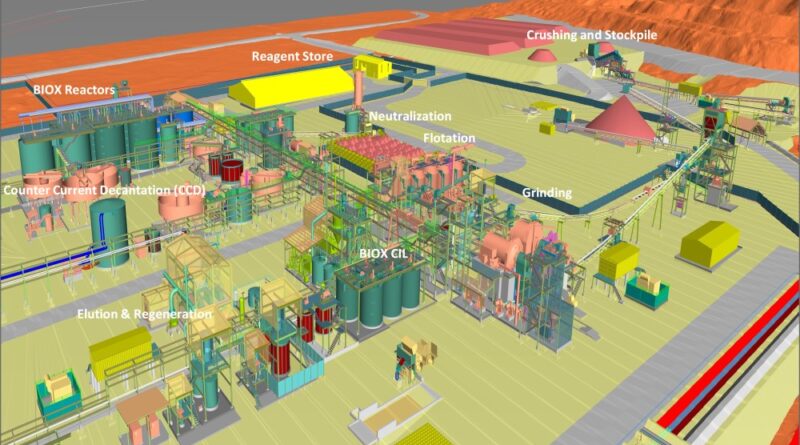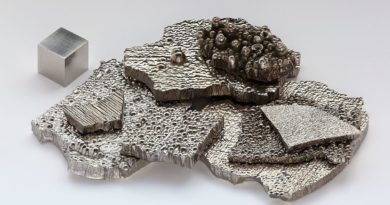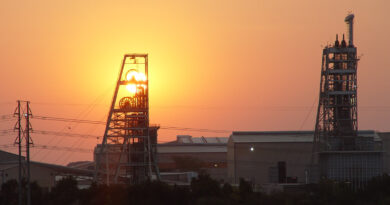Endeavour to launch construction of Sabodala-Massawa expansion
LONDON – Endeavour Mining has announced that it will soon launch the construction of its Sabodala-Massawa expansion in Senegal, supported by the recently completed Definitive-Feasibility Study (“DFS”).
The DFS recommends the expansion of the Sabodala-Massawa complex by supplementing the current 4.2Mtpa Carbon-in-leach (“CIL”) plant with a 1.2Mtpa BIOX plant to process the high-grade refractory ores from the Massawa Central Zone and Massawa North Zone deposits (“Expansion Project”), with first gold production expected in early 2024.
BACKGROUND
Endeavour acquired the Sabodala-Massawa mine from Teranga Gold on 10 February 2021, prior to which Teranga Gold acquired the Massawa project from Barrick Gold on 4 March 2020, combining the Sabodala mill and deposits with the nearby Massawa deposits.
As such, the Sabodala-Massawa mine consists of two mining licenses, the Sabodala exploitation permit (“Sabodala licence”) and the Massawa exploitation permit (“Massawa licence”) and two further exploration permits. The Sabodala licence is held by Sabodala Gold Operations SA (“SGO”) while the Massawa license is held by Massawa SA (“Massawa”). Endeavour holds indirectly through its subsidiaries a 90 percent stake in each of SGO and Massawa with the Government of Senegal holding the remaining interest.
In August 2020, Teranga Gold filed a Preliminary Feasibility Study (“PFS”) for the phased expansion of Sabodala-Massawa. In 2021, Endeavour expedited the completion of the initial upgrades at the existing Sabodala-Massawa CIL plant and simultaneously advanced the DFS for the addition of a refractory ore processing plant to confirm the economic viability of processing the high-grade refractory ores from the Massawa Central Zone and Massawa North Zone deposits.
Lycopodium Minerals Pty Ltd (“Lycopodium”) was responsible for the compilation of the report and delivery of the DFS to Endeavour. Orelogy completed the mine design for the DFS. Minescope Services are consulting on the Process Plant, while Metso-Outotec, who own the BIOX technology, are providing the BIOX® and milling technology. Land and Marine Geological Services Pty Ltd (“L&MGSPL”) will be designing and executing the Tailings Storage Facility (“TSF”) design. QGE Pty Ltd (“QGE”) will be providing the power station expansion engineering services and managing the delivery of the power station expansion by an Original Equipment Manufacturer on a lump sum turn key basis.
Endeavour expects to file a Technical Report pursuant to National Instrument 43-101 – Standards of Disclosure for Mineral Projects in respect of the Sabodala-Massawa DFS within the following 45-day period.
MINING OPERATIONS
At the Sabodala-Massawa complex the open pit mining method used is conventional drill and blast, truck and shovel and is conducted with Endeavour’s own fleet. The current fleet includes a total of 70 mobile mining equipment units. The mine operates using 10-meter blast benches mined in 5-meter flitches for waste and two 2.5-meter flitches for ore. Open pit mining operations assume selective mining with respect to both weathering type, process route and grade categories. The current mining strategy assumes the selective mining of the higher-grade material to enable separate processing of the high-grade fresh refractory and non-refractory components.
In addition to the open pit mining, underground reserves defined at Sabodala-Massawa will be mined by two 500tpd underground mining operations at the Golouma and Kerekounda deposits located on the Sabodala Licence, with a combined 1,000tpd nominal rate. The selected mining method adopted for the operations will be cut and fill with mining operations projected to commence in 2028 and continue through to depletion in 2033.
All surface ore haulage and supply of explosives is outsourced to a specialist contractor. Grade control drilling is carried out by a combined owner and contractor drilling fleet.
PROCESSING OPERATIONS
The process plant at Sabodala has been operating since 2009, processing over 50 million tonnes of free-milling gold ores from the Sabodala property, via a conventional 4.2Mt per annum SABC/CIL circuit since its first production.
Ore from the Massawa property, will be transported approximately 27 to 32km by road to the Sabodala Whole Ore Leach and Refractory ROM pads for subsequent processing. Ore classified as Whole Ore Leach will be processed through the conventional SABC/CIL circuit while Refractory ore will be processed via a 1.2 Mtpa BIOX® processing plant, as illustrated above.
Refractory ore will be blended on the dedicated ROM pad to optimize the sulphur content before being fed to the crusher. A primary jaw crusher will produce a coarse crushed product which will be supplemented by the use of a surge bin conveyor, together the crusher and the surge bin will feed a crushed ore surge bin which will feed a crushed ore stockpile capable of supporting the mill for upto 16 hours. Ore will be milled through a conventional SABC configuration with a SAG and Ball mill grinding ore down to 90µm. The milled ore will be passed through a gravity circuit to recover any free-milling gold before being floated through a rougher-scavenger-cleaner circuit to produce a sulphide concentrate.
The sulphide concentrate will be ground down to 45µm and then passed through seven BIOX® reactors with a minimum retention time of approximately 5.4 days. The resulting oxidised sulphide concentrate will be neutralized and processed through six BIOX® CIL tanks in series with a minimum retention time of 36 hours. The BIOX® process is a biological oxidation process designed to liberate refractory gold, or gold hosted within the mineral lattice; typically of sulphide minerals. Bacteria oxidise the sulphide minerals exposing occluded gold from within the sulphide minerals allowing the gold to be readily leached by conventional CIL.
Gold will be recovered from loaded carbon in a AARL elution circuit by elution, electrowinning and gold smelting to produce doré. Extensive metallurgical testwork has indicated that overall gold recovery from the refractory ore plant is expected to be over 88% over the life of mine.




